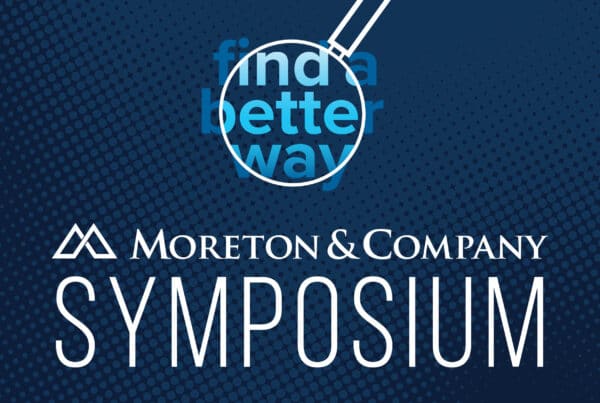
Skills-Based Hiring
Nearly two decades ago, employers started requiring college degrees for positions that previously did not require one, even though the duties and responsibilities for those jobs did not change. Advancements in technology changed the nature of these positions. While the competencies required to perform those jobs also changed, many job titles did not. To account for these changes, employers began using educational degrees and other formal markers as proxies for applicants’ or employees’ skills. This transition became known as “degree inflation.”
Currently, more than 70% of job listings in the United States require degrees, according to Fortune, but less than 50% of workers have a bachelor’s degree. As a result, the number of candidates who meet employers’ educational qualifications is shrinking, causing many organizations to struggle to find workers to fill their open roles. This has resulted in employers incurring increased recruitment costs and passing on qualified candidates who don’t hold educational degrees, especially when filling low- and middle-skilled positions. In recent years, employers have begun shifting away from focusing on educational qualifications and other traditional markers when hiring, favoring a skills-first approach–also known as skills-based hiring.
What is Skills-Based Hiring?
Traditionally, a candidate had to meet certain formal requirements to be considered for an open role, such as educational degrees, years of professional experience, personal references and other pedigree markers. Hiring was fairly simple; the candidate who satisfied the most prerequisites typically received the employment offer.
Skills-based hiring refocuses candidate evaluation from traditional qualifications to the skills and capabilities required to perform the work, regardless of where those skills were learned or acquired. It allows organizations to use skills-related data to evaluate candidates’ ability to perform the job and assess their potential. As such, employers can find skilled candidates for their open roles instead of trying to mold candidates to a set job profile.
Why Embrace Skills-Based Hiring?
The traditional method of using formal degrees and certifications as proxies of candidates’ hard and soft skills, while simple and convenient, often failed to accurately predict a candidate’s suitability for the role. Recently, positions have been more difficult to fill using the degree-centric approach, especially in low- to middle-skill positions, with some roles being offered to candidates who were ill-fitted for them despite their college degrees.
As a result, many organizations have changed their job postings to no longer require formal certifications, educational degrees, and experience to expand their talent pools. Skills-based hiring can provide employers with certain advantages over traditional recruiting methods:
Expanded Talent Pool:
- Expanding the pool of candidates increases the likelihood that employers will find successful candidates. By no longer focusing on candidates with four-year college degrees or a particular amount of work experience, employers can find workers with skill-sets that better fit their open positions. It can also allow employers greater workforce flexibility as they’re not limited by formal hiring requirements.
Improves Workplace Diversity:
- Employers using skills-based hiring often receive a larger, more diverse pool of candidates, leading to a more diverse workforce. For example, a skills-based approach to hiring typically encourages more women to apply for jobs they may not have otherwise, as women are less likely to apply for jobs if they don’t meet the job posting’s specific requirements. Skills-based hiring can also expand an organization’s talent pipeline and advance inclusion initiatives. For example, traditionally overlooked workers are more likely to be considered based on their skills instead of whether they meet formal hiring markers, such as a four-year college degree.
Focuses on Qualifications:
- Even when a candidate has an educational degree and experience, there’s no guarantee they’ll be a good fit for the role or meet employer expectations. Consequently, skills-based hiring can be a more direct path to finding qualified candidates because this approach attempts to emulate the actual work experience of the position for which a candidate is being considered. Shifting to skills-based hiring can help employers reduce the time and resources spent on recruiting, on-boarding, and training employees. By hiring employees that already possess the skills and competencies to perform the job, organizations can redirect the resources they save to other priorities.
Expedited Hiring:
- When employers focus on traditional hiring requirements, they often delay evaluating candidates’ skills until later in the interview process–after they’ve already invested a significant amount of time. Since the primary focus of skills-based hiring is evaluating candidates’ skills, employers can determine whether candidates have the skills to match the position early in the interview process. Evaluating candidates based on their skills also can lead to candidates determining whether their skills match the position, increasing the likelihood of individuals opting out of the interview process sooner if they feel their skills don’t match.
Implementation Considerations
Switching to skills-based hiring requires organizations to change not only who they hire, but also how they hire. Keep in mind that organizations don’t need to redefine their entire recruiting and hiring process to implement skills-based hiring. To start, employers can focus on a single department or existing vacancies with the highest time-to-hire and turnover rates. This allows employers to test this new approach before adopting it on a broader scale.
A skills-based approach to hiring will likely require employers to rewrite job descriptions to focus on candidates’ skills and the primary role responsibilities instead of formal requirements. This can not only help employers receive more applicants but also ensure they receive appropriately qualified candidates that fit the position. Employers can also consider using skills-based assessments to determine a candidate’s current job-related skills during the hiring process. Organizations can even find ways to evaluate candidates’ skills in a way that mimics working in the position.
Despite the potential benefits of skills-based hiring, many roadblocks prevent employers from adopting this approach. Shifting to skills-based hiring requires a change in mind-set as well as hiring practices. This can be difficult and requires a lot of time and effort. Employers can also struggle to find qualified candidates and validate their skills. Skills-based hiring seems to produce successful candidates for low- to middle-skilled positions, but hiring highly skilled workers becomes much more difficult.
Skill-based hiring can be an effective way to find qualified candidates that meet an organization’s needs. Prioritizing skills over traditional hiring requirements can help organizations find applicants that better fit job requirements and can perform the job. This can allow employers to build a skilled and adaptable workforce to further their organization’s growth.
Federal Agencies Release New Guidance on
ACA Contraceptive Coverage Requirements
The Department of Labor (DOL), Department of Health and Human Services (HHS), and IRS have issued FAQ guidance addressing required coverage of contraceptive drugs. The Affordable Care Act (ACA) and related guidance have required non-grandfathered group health plans and insurers to cover (without cost-sharing) at least one form of contraception in each FDA-identified category. This also applies to any contraceptive service or FDA-approved, cleared, or granted contraceptive product that an individual and their attending provider have determined to be medically appropriate for the individual. Plans and insurers are allowed to utilize reasonable medical management techniques within a specified category of contraception, so long as there is an “easily accessible, transparent, and sufficiently expedient” exceptions process that is not overly burdensome and defers to the attending medical provider’s recommendation.
The FAQs were released to respond to reports of “unreasonable medical management techniques and other problematic practices.” This guidance describes an alternative “therapeutic equivalence approach” to compliance for contraceptive drugs and drug-led devices (i.e., combination contraceptive products comprised of a drug and a device). The FAQs state that, for FDA-approved contraceptive drugs and drug-led devices, the agencies will consider a medical management technique to be reasonable if the plan or insurer covers all FDA-approved contraceptive drugs and drug-led devices in a category without cost-sharing–other than those for which there is at least one therapeutic equivalent drug or drug-led device that the plan or insurer covers without cost-sharing. In addition, the plan or insurer must provide an exceptions process that allows an individual to access a specific therapeutic equivalent that is determined to be medically necessary with respect to the individual, as determined by the individual’s attending provider. A drug or drug-led device will be considered therapeutically equivalent based on the FDA’s Approved Drug Products with Therapeutic Equivalence Evaluations (Orange Book).
These FAQs clarify that health plans and insurers may satisfy the ACA’s contraceptive coverage requirements either by implementing the standards laid out in prior FAQs or by using the alternative therapeutic equivalence approach outlined in these FAQs. In either case, plans and insurers are expected to make available an easily accessible, transparent, and sufficiently expedient exceptions process. Based on continued reports of barriers to access, the agencies expressed concern that many exceptions processes do not comply with the prior guidance. However, under the new therapeutic equivalence approach, the circumstances under which an exceptions process would apply should be less frequent.
As these recent FAQs are additional guidance on existing requirements, the new alternative “therapeutic equivalence approach” described in the FAQs may be used immediately.


